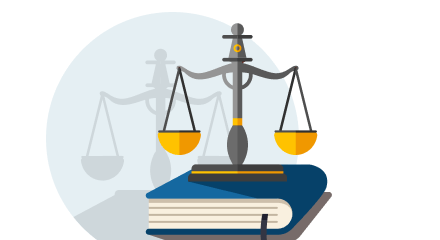Workers' Compensation Settlement
If you choose to settle your workers’ compensation case, you are agreeing to release your employer and its insurance carrier from the responsibility to pay for workers' compensation benefits in exchange for a sum of money, either a lump sum or a structured annuity. Should you accept a settlement offer, you are agreeing to close out the case, forgoing all future benefits. These funds typically represent the future value of ongoing benefits, including the cost of ongoing future medical treatment.
What is a Workers’ Compensation Settlement?
A Workers Compensation Settlement, is an agreement between an employer/insurance carrier and an injured worker for a set amount of money, either a lump sum or an annuity that will cover the injured workers’ lost wages, future earnings, and medical expenses for the rest of their life.
The Parts of a Workers' Compensation Settlement
Future Medical Amount
Indemnity Amount
Workers' Compensation Settlement Process
States have different laws regarding workers’ compensation settlements. These can be found on your state workers’ compensation board website.
Deciding to Settle
Freedom from utilization reviews and treatment denials are but a few reasons many injured workers choose to leave the workers’ compensation system behind in favor of a settlement. Once you settle, the MSA funds can only be used for medical treatment related to your injury and covered by Medicare but there is a lot more freedom to treat the way you would like without as many restrictions.

Considering the Impact to Government Benefits
It’s important to consider how the settlement could interact with other government benefits you could receive, including Medicare, Medicaid, social security, and short-term or long term disability. A trust account may need to be established to protect current benefits

Negotiating a Settlement Amount
Each workers’ compensation case has its own unique variables, so there is no one size fits all used to calculate your claim's future value. It’s important to understand what future medical treatment you will need going forward so that you can ensure the settlement funds are adequate to cover future medical care.

Presenting Settlement to State Workers' Compensation Board
All workers’ compensation settlements need to be reviewed and approved by a state authority. Each state has specific worker’s compensation settlement requirement. Your state’s workers’ compensation board website usually provides guidance or their settlement requirements and process.

Why Choose a Workers’ Compensation Settlement?
Settlement allows you to secure the treatment you want when you want it without potential denials or other barriers.
Less Restrictive Treatment Options
Settling can mean less restrictive treatment, the freedom to see any doctor, provider, or specialist, and use any pharmacy. If you have been having treatments denied through Utilization Review, settlement represents the opportunity to seek the treatment you would like outside of state treatment guidelines.
Treat with the Healthcare Provider You Want
In some workers’ compensation systems you can be required to see healthcare providers that you did not choose or that are not located close to your home. For someone with a significant injury, traveling to and from medical appointments can not only be a challenge, but also exhausting and frustrating.
Settling allows you to see and treat with the healthcare providers of your choice.
A New Perspective
Settlement can represent a fresh start. You leave the workers’ compensation system, begin to put your injury behind you, and move on with your life. You no longer have to attend independent medical examinations or court dates and can concentrate on getting your life back on track.
A Shift in Responsibility
Settling a workers’ compensation claim ultimately represents a major life event. It is a life changing process that will have numerous impacts on the way you live.
Potential Challenges After a Workers’ Compensation Settlement
With settlement comes a new set of challenges. The increased freedom often means increased responsibilities, and decreased support and resources.
Support After A Workers’ Compensation Settlement
One of the largest challenges you could face after settling your workers’ compensation case is a lack of professional support. Once a case is settled your adjuster, attorney, support from the regulatory system, and any nurse case manager steps away. This may leave you without the resources you once relied on to help coordinate your care or answer questions in an increasingly complicated healthcare system. A Professional Administrator can help answer your questions and provide you with support once you settle.
Keeping Network Discounts on Treatment
While in the workers’ compensation system, you are able to treat through the carrier/employer, and therefore get access to their volume discount networks for pharmacy, provider, and other medical treatments. Through the workers’ compensation system and vendors that are utilized, carriers/employers pay less than full price for the treatments and prescriptions – these discounts lead to dramatic savings that accrue to the benefit of the carrier/employer and the workers’ compensation system.
Once you settle your case, you must utilize your settlement funds to continue treatment, but you will not have access to the same medical discount networks you had while in the workers’ compensation system. Many injured workers who have settled their cases end up vastly overpaying for their treatments because they are charged full retail price. You could find that you are spending through your settlement funds at a much quicker pace than expected. For example, Celecoxib, an anti-inflammatory, might cost the insurance carrier around $3.82 per pill. Once you settle, you will be paying retail, around $7.58 for the exact same medication. One way to save treatment funds is by using a Professional Administrator who has access to network discounts.
Medicare Set Aside Reporting Requirements
Once you choose to settle, you are responsible for managing your own medical care, coordinating treatments, and, if you have a Medicare Set Aside (MSA), complying with the guidelines put forth by the Centers for Medicare and Medicaid Services (CMS). Keep in mind that if you fail to comply with CMS’ guidelines, you risk having your future Medicare benefits denied.
How Ametros Works With Workers' Compensation Cases
Ametros brings a unique perspective to settlements in the workers' compensation industry. Our main focus is the injured worker. We become their resource and the point of contact after settlement. Ametros' Settlement Advisors can walk attorneys, adjusters, structured settlement brokers, and injured workers through the settlement process to make sure everyone understands just what it means to settle a claim. We also help our members by providing significant savings on all their ongoing medical needs.
Support
Providing help with compliance and making sure the injured worker saves money on their healthcare expenses.
Coordination
Coordinating all parties, including injured parties, employers, attorneys, annuity brokers, medical providers and Medicare.
Reporting
Addressing the injured worker’s fears of settling their ongoing medical case and managing their own medical care as well as reporting their Medicare Set Aside.
Savings
Ametros discounts can save you up to 60% on provider bills and 38% on all other medical expenses, allowing your medical funds to last as long as possible.*
Bridging the Gap
Having our team of settlement advisors assist in the settlement process and help bridge the gap between the two parties.
It is highly recommended that settlement recipients consider the use of a professional administrator for their funds.
- Medicare's WCMSA Reference Guide
